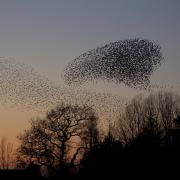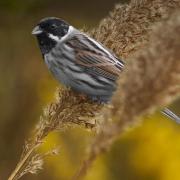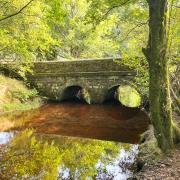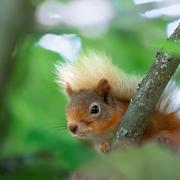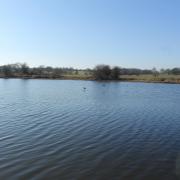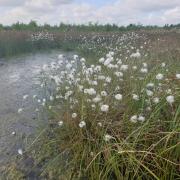A Bowland-bred hen harrier was found shot in North Yorkshire recently sparking fears for the future of this iconic bird. Blánaid Denman reports on the fight to save themcertain
Hope for harriers
Pupils from six Lancashire schools within the Forest of Bowland are so concerned about the plight of the hen harrier that they have collectively created 320 white hen harriers models to symbolise each pair that should be breeding in our uplands.
They were brought together at Hornby St Margaret’s Primary School to create one giant bird, playing on the symbol of a white dove of peace. This display was a rallying call for people from all walks of Bowland life to save this beautiful part of our natural heritage and ensure that hen harriers remain a living icon of Bowland for generations to come.
Over the past year, the children – from Hornby, Leck, Melling Wray, Quernmore and Caton - have been visited by the RSPB to raise their awareness and understanding of this magnificent upland bird of prey in the context of the local landscape, as well as ensuring its conservation.Blanaid Denman, of the RSPB, said: ‘It is really heartening to see that so many children are concerned about the plight of what they see as their birds and are making a stand to appeal for their protection.’ To find out more, go to www.rspb.org.uk/skydancer
For the past five decades the Forest of Bowland has served as England’s only stronghold for our rarest breeding bird of prey – the hen harrier. Such a distinction has been the source of local pride. It’s used as the area’s logo and a brewery created two ales in its honour.
Last breeding season, however, there were no nesting attempts in the whole of Bowland for the first time in over 30 years. An already precarious situation has become critical. The future of this species in England hangs in the balance.
But should we care? Outside of Bowland, few people have even heard of a hen harrier. These birds don’t enjoy the iconic status of the golden eagle or the ubiquity of a hovering roadside kestrel. Yet, it is an integral part of the English uplands and a living symbol of the Bowland landscape or, at least, it should be.
It is estimated that the upland heath and blanket bogs of England should be home to at least 320 pairs but last year there was only one confirmed breeding attempt in the whole of England. It was not much better in 2011, with only four successful nests, all on a single estate in Bowland owned by the water company United Utilities. So why are they not breeding?
It’s not for want of trying. Indeed, there can be few creatures that put in as much effort to attract a mate as the male hen harrier. In spring, he launches himself into a spectacular and death-defying courtship ritual called skydancing, which sees him soaring repeatedly to a great height and then diving at great speed towards the moor below, pulling up just before impact.
Sadly, these displays are largely unseen by their intended audience. There appear to be so few hen harriers in the English uplands that potential pairs simply aren’t finding each other. Last year, both male and female harriers were seen in Bowland but never at the same time.
It seems a lonely existence and it‘s certainly a perilous one. The primary reason there are so few in England is that in addition to their main diet of pipits and voles, they also eat red grouse, a popular game bird. This brings them into conflict with driven grouse shooting interests, as in certain circumstances, hen harriers can reduce the number of grouse available to shoot.
In 2011, an independent government report found that persecution remains the biggest single factor preventing the hen harrier’s recovery in England. In 2012, three were found shot – one each in England, Scotland and Ireland.
Protecting the hen harrier is one of the RSPB’s top priorities and we are working hard to restore their population in England. We are lobbying the government for legislation to protect birds of prey, such as vicarious liability. This would make landowners accountable for wildlife crime on their estate, laws already used in Scotland.
Additionally, we have developed Skydancer, a four-year project, funded by the Heritage Lottery Fund, United Utilities and supported by the Forestry Commission, through which we are working directly with the shooting community and local people to protect and promote their conservation in northern England. Recently, RSPB staff in theLancashire worked with local children.
Ultimately, if the hen harrier’s place in the Lancashire uplands is to be preserved, it needs local champions. Simply telling your neighbour or writing to your local paper will help put a spotlight on hen harriers and their plight. The more people that care, the more hope we have of restoring these beautiful birds to their rightful place, skydancing over the Bowland Fells.















